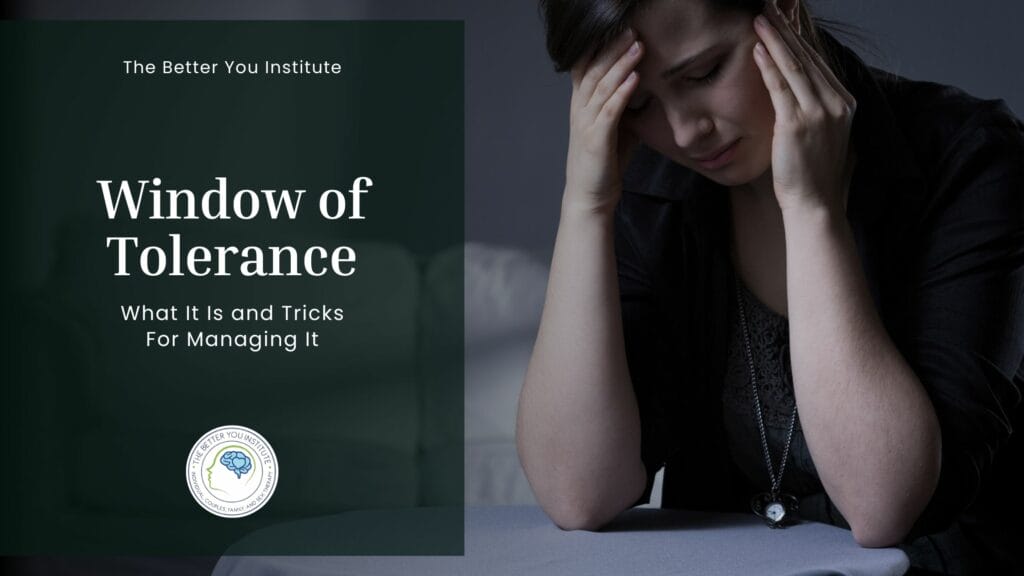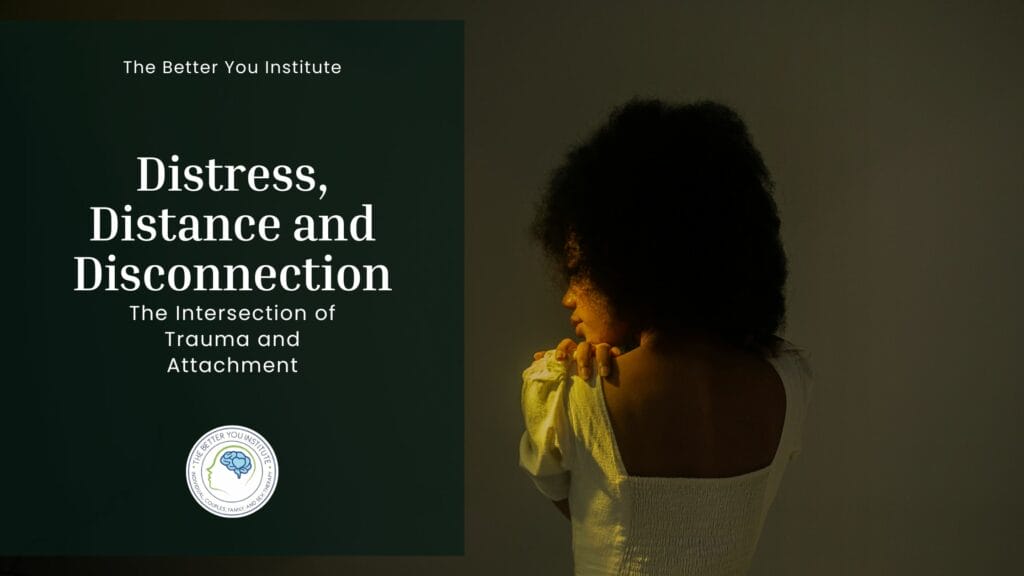Does it seem like you’re looking for love in all the wrong places? Like everyone but you have the rule book on relationships? From the time we are babies, the adults in our lives teach us how to be loved and give love. We unconsciously try to recreate these patterns of love in our adult lives because they are familiar, which breeds comfort. These patterns aren’t always good for us and can lead to unhealthy cycles despite their comfort. Unfortunately, because these patterns once served and protected us, we can be blind to these cycles being unhealthy or hindering our current lives. We are left wondering why relationship after relationship doesn’t work out or why we keep running into the same problems in our current one. Uncovering the hidden dynamics, you have grown accustomed to can be the first step to a satisfying relationship.
Table of Contents
Family Patterns
Many problems in relationships don’t come from the relationship itself but come from our families of origin and the patterns that existed before us that were passed down to us in childhood. These patterns are referred to as intergenerational patterns. Entering a relationship can reveal or trigger old childhood wounds that have never been healed. Childhood is full of lessons on how to act and feel about the meaningful relationships around us. The blueprint laid down in our early attachment relationships with caregivers shows up in any and all emotionally-meaningful relationships we enter now. When this blueprint is deeply flawed due to a lack of love or care in our childhood, emotional connection in adulthood can feel confusing or even dangerous.
Adult romantic relationships can be challenging and full of anxiety. Survivors of childhood trauma have to face additional challenges, such as going through the processes of healing and unlearning. Sometimes just being able to link our experiences of unresolved trauma from our families to the present day is enough to make a world of difference. Gaining this awareness allows us to recognize the thoughts, feelings, and behaviors we have been carrying that don’t belong to us. Through the act of letting them go, the cycle of unconsciously reenacting our trauma can be broken.
What is Childhood Trauma
Childhood trauma is an umbrella term and is a more common experience than you might think. Many people have conflicting emotions about the quality of childhood and might think to themselves, “Other people had it so much worse. My friend was literally burnt by her mother! My parents loved me. They just didn’t show it all the time.” Or, “I always had food on the table, and my parents bought me clothes for school.” The first discounts not feeling loved in a fulfilling way because there was no physical abuse. It also disregards your own feelings and experiences by comparing it to anothers’. The second highlights basic needs being met but nothing else. The truth is, trauma is any significantly distressing experience you were exposed to or deprived of. This is not limited to what has been done to you but also what you weren’t given, what you’ve witnessed, or the outcomes of those actions.
Examples include:
- Divorce
- Emotional or physical neglect
- Sexual abuse
- Physical violence
- Being talked down to
- Not being praised
- Being put into a role you didn’t want (having to care for a sibling, holding your caregivers’ emotions, etc.)
- Being questioned or talked out of things when you made decisions for yourself
- Loss of a loved one
- Never having your caregivers at your extracurricular events
- Being told you can’t
- Never hearing “I love you.”
- Not being touched or kissed
- Any other event or actions that left you longing, lonely, abandoned, scared, helpless, or overwhelmed
Complex Trauma
Complex trauma occurs when exposure to different traumatic events over the course of your lifetime or the same type of trauma repeatedly. The effects of this exposure can look different for each individual. Complex traumas are more severe and long-lasting, such as emotional neglect or abuse by a caregiver early on in life or getting robbed at gunpoint in adulthood. Since a child’s physical and mental development relies heavily on attachment to their caregiver, emotional neglect often prevents the child from forming secure attachments. Children without secure attachments are more vulnerable to stress and have difficulty regulating emotions.
Complex trauma can also occur in adulthood. Examples include emotional, physical, or sexual abuse from a partner (intimate partner violence, IPV). You may be in a job with a narcissistic boss that you feel trapped in because the money is good, but the work environment is terrible. Poverty is also an example of complex trauma. If you have experienced long-lasting trauma, emotional regulation may have become increasingly difficult for you, making navigating or building healthy relationships a hardship.
Emotional Regulation
Emotional regulation is the ability to control how we process and respond to difficult emotions without spontaneously acting out. It is not the ability to minimize or not have emotions altogether. This is opposed to emotional dysregulation, when you have big feelings that take over, such as lashing out in anger or hurt, shutting down and withdrawing, or becoming over critical of yourself or others. When a person is emotionally dysregulated, they tend to have regrets about how they handled the situation in the heat of the moment. However, emotional regulation is the behavior we intentionally choose in response to our current emotions.
When a child has an environment that does not feel safe, they form maladaptive patterns to emotionally regulate themselves. Children crave safety, comfort, and support from their environments and the adults in their lives. This safety enables them to learn how to trust others and interact with the world around them. When childhood is riddled with traumatic experiences and unpredictable caregivers, children learn those around them can’t be trusted, and they develop behaviors that help them cope with the emotional dangers they encounter day to day. Examples of maladaptive emotional regulation (or emotional dysregulation) are saying yes when you want to say no (loose boundaries), isolation, turning to drugs or alcohol to numb, becoming overly obsessed with getting good grades or being perfect, or eating disorders (this list is not exhaustive). These examples stem from attempts at seeking control or numbing out.
The trauma experienced in childhood interrupts the development of skills needed for our adaptive emotional toolkits (i.e., emotional regulation) for adult relationships. Emotional skills, like the ability to recognize, express, and regulate your emotions, can be learned and developed at any age. These emotional skills can be added to your tool kit as you heal and grow. However, if emotional regulation is not learned in childhood due to experienced trauma, you may become emotionally dysregulated quite frequently in your adult romantic relationships.
How Does Complex Trauma Impact Adult Romantic Partners?
A history of complex trauma can predict difficulty with romantic partners and relationships. Complex trauma manifests itself in different behaviors (i.e., emotional dysregulation) that can be unpredictable and extreme. The behavior appears unpredictable to others as these traumas lay under the surface and subconsciously drive interactions. Reminders of traumas or triggers can be found even in mildly stressful interactions in your everyday environment with loved ones.
Those who have experienced complex trauma often have difficulty emotionally regulating. Therefore, it may seem like they are overreacting (becoming intensely emotional or acting in ways that aren’t matched up with the severity of the situation) without the ability to think of the consequences or understand they are in a triggered state. These reactions are a learned defensive tactic to protect. Often, these reactions become problematic or detrimental in adult relationships.
People with complex trauma often externalize, internalize, or disassociate as stress reactions. Externalizing behaviors are directed to another person or the individual’s environment. Internalizing behaviors attempt to control emotions from within. Lastly, disassociation is the removal of oneself from the situation mentally and emotionally. Disassociation is often described as an ‘out-of-body experience.’ These stress reactions are attempts to self-regulate. Unfortunately, these learned behaviors can be ineffective in coping with stress in our adult relationships.
Maladaptive Externalizing Emotional Regulation
Externalizing the problem can often look like self-victimization, not taking ownership of behaviors, or thinking life is unfair and out of control. Maladaptive externalizers might find themselves saying, “it is what it is,” when they feel a loss of control. In adult relationships, this statement can look like one of Gottman’s Four Horseman: criticism, contempt, defensiveness or stonewalling to the other person trying to help render the situation. Maladaptive externalizers often blame their partner for something going wrong in the relationship. Externalizing the issue often takes place when the person feels blamed or shameful. They are projecting their emotions onto someone else.
Maladaptive Internalizing Emotional Regulation
Maladaptive internalizers, on the other hand, go inward with their blame. They are often self-deprecating, take too much ownership of what is happening, and say, “I’ll never get it right.” They punish themselves (in childhood with eating disorders or cutting; in adulthood with intense exercise or fad diets) when threats appear in their environment, such as an unhappy partner. Internalizers learned in childhood that their suffering was their fault, which makes them vulnerable to re-victimization. Negative self-talk can be a very strong presence in the relationship. Partners may find it very difficult to rationalize with these individuals and make movements to repair things.
Maladaptive Dissociation Emotional Regulation
A third coping mechanism that may have been learned in childhood is the ability to “tune out” (emotionally numbing) perceived threats in the environment, such as an angry spouse. This person may have a history of overwhelming or terrifying experiences that they had to mentally and emotionally separate themselves from to cope. As a result, when they encounter stressful situations or face a trauma reminder (i.e., a trigger), they may automatically disassociate. This may feel like being detached from their body or feeling unreal. Their partner may call them out for “spacing out” during an argument, having gaps in their memory, or not paying attention during important conversations.
Although these extreme reactions may be easily identified as inappropriate by partners, people with complex trauma may not see it as easily. If you have one of these three emotional regulation responses, you might wonder why you keep being mistreated in every relationship or mistreat your romantic partners. These reactions may have been crucial to maintaining attachment with caretakers in childhood. However, these responses no longer serve you as you grow up and start to encounter relationships in which you want to establish safety.
Other relationship skills that may have been disrupted by childhood trauma include:
- Emotional self-awareness
- Ability to identify what the other person may be feeling/empathize
- Ability to accurately evaluate your reactions (as opposed to taking on the maladaptive external/internalized response)
- Ability to link your thoughts and emotions with your behaviors
The Healing Process
Healing while in a relationship is possible, and you can start your journey in many different ways. By reading this article, you have already taken the first step! Therapy is another great starting point. It gives space to process the past and examine how it affects your present. In addition, therapy such as EMDR can help you to heal from the trauma you suffered. The work you do outside therapy is equally as important as the work within the sessions. The utilization of other resources – books, podcasts, documentaries, and support groups – can also help you heal. Overall, healing is a process that involves many different components. These tools can help you to move on and have the healthy relationships you deserve.
Acknowledging to yourself and your partner that you have trauma is the first step. Working to bring awareness and make connections of your past affecting the dynamic in your relationship is helpful. Actively working on understanding, empathizing, and giving yourself grace throughout this process will help you stabilize your relationship. It’s entirely up to you whether you share the specifics of your traumatic past with your partner. You may choose to bring these specifics into therapy or open up to your partner slowly as you continue on your path of healing. Here are three go-to actions you can take to heal your childhood trauma:
-
Identify and Understand Your Maladaptive Emotional Regulations
- Track your feelings by writing them down
- What was happening before, during, and after the event that sparked the emotion?
- Is there a pattern to these emotions?
- What is the story you’re telling yourself that led you to feel this way?
- When was the first time you felt these emotions? What was happening then vs. now?
- What did you do today when these emotions came up for you?
- What have you done in the past when these emotions have come up for you?
- Where did you feel these emotions in your body? Or did you disassociate?
- Did you become “heady” and stuck in your thoughts?
-
Create Safety With Your Partner for Change
- Have conversations with your partner that lets them know you’re working on things and to be more sensitive to that work
- Share with your partner the list of emotions you tend to feel throughout your day and what the triggers might be
- Explore and be open to them helping you identify new ways of responding to these emotions
- Be curious with your partner, ask them what they think they can provide to you during this time of learning and growth
- Common types of created safety:
- receiving validation for where you are right now
- having someone acknowledge your experience
- physical touch/eye contact
- hearing reassurance
- feeling loved/seen/heard
- having the undivided attention of a loved one
-
Give Yourself New Experiences
- When you recognize the emotion coming up for you, label it out loud
- Think back to the conversations with your partner about what you wanted to do as a new action, and try it out. If you can, acknowledge that you thought about it, but it still feels too scary. What do you need to create more safety to try it?
Love is a basic human need that can be complex and be influenced by childhood trauma. Recognizing toxic cycles that started in childhood and have repeated themselves in adulthood is the first step in understanding and healing your inner childhood trauma. Identifying a healing process that works for you that involves creating safe spaces and boundaries with people in your life is a crucial step in your healing journey. Unpacking trauma is a complex and hard process, but prioritizing your healing journey will benefit you in all areas of your life.
If you want to begin your journey to healing from your childhood trauma, we can help! Work with a trained professional that can support your journey. Call us today at 267-495-4951.
Here are some books that may be helpful in your healing process:
- Not the Price of Admission: Healthy Relationships After Childhood Trauma by Laura S. Brown
- Complex PTSD: From Surviving to Thriving by Pete Walker
- It Didn’t Start With You by Mark Wolynn
- Good Inside: A Guide to Becoming the Parent You Want to Be by Dr. Becky Kennedy







